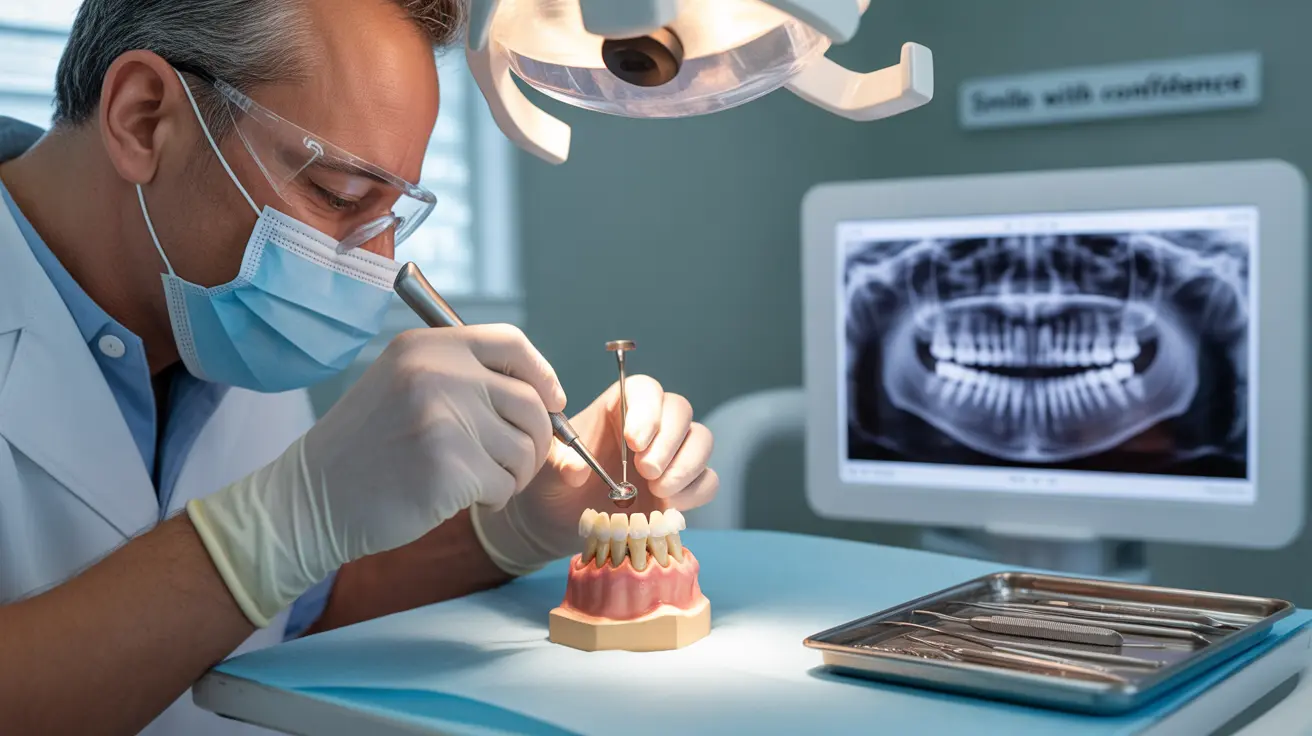A cemented crown is a vital dental restoration that can protect and strengthen damaged teeth while restoring their appearance and function. Whether you're dealing with a cracked tooth, severe decay, or need to protect a tooth after a root canal, understanding the cemented crown process is crucial for making informed decisions about your dental health.
In this comprehensive guide, we'll explore everything you need to know about cemented crowns, from the procedure itself to aftercare and maintenance, helping you prepare for this common dental restoration.
What Is a Cemented Crown?
A cemented crown is a custom-made cap that's permanently attached to an existing tooth or dental implant using special dental cement. These crowns can be made from various materials, including porcelain, ceramic, metal alloys, or a combination of materials, depending on the location of the tooth and your specific needs.
The Crown Preparation Process
Initial Examination and Planning
Before getting a cemented crown, your dentist will thoroughly examine your tooth and take X-rays to assess the extent of damage and ensure a crown is the appropriate treatment. They'll discuss material options and create a treatment plan tailored to your needs.
Tooth Preparation
During the first appointment, your dentist will:
- Remove any decay from the tooth
- Reshape the tooth to create space for the crown
- Take detailed impressions for the permanent crown
- Place a temporary crown to protect your tooth
Crown Placement and Cementation
Once your permanent crown is ready, you'll return for a second appointment where your dentist will:
- Remove the temporary crown
- Clean the prepared tooth thoroughly
- Check the fit and appearance of the new crown
- Permanently cement the crown in place
Recovery and Aftercare
The recovery period after getting a cemented crown is typically brief, but proper care is essential for long-term success. Most patients can return to normal activities immediately, though some precautions are necessary in the first few days.
Managing Initial Sensitivity
It's normal to experience some sensitivity to hot and cold temperatures in the first few weeks after getting a crown. This typically subsides as your mouth adjusts to the new restoration. If sensitivity persists or worsens, contact your dentist for evaluation.
Maintaining Your Cemented Crown
With proper care, a cemented crown can last 10-15 years or longer. Essential maintenance practices include:
- Brushing twice daily with fluoride toothpaste
- Flossing daily, paying special attention to the crown area
- Regular dental check-ups and cleanings
- Avoiding excessive force or pressure on the crown
Frequently Asked Questions
What is a cemented crown and why might I need one for my tooth? A cemented crown is a custom-made cap that's permanently attached to your tooth to restore its shape, size, strength, and appearance. You might need one if you have a severely damaged, decayed, or weakened tooth, or after a root canal procedure.
How is a dental crown procedure performed from start to finish? The procedure typically requires two visits: first for preparation and impressions, then for permanent placement. Your dentist will prepare the tooth, take impressions, place a temporary crown, and later cement the permanent crown during the second visit.
What should I expect in terms of pain or sensitivity after getting a cemented crown? Some temporary sensitivity to hot and cold is normal and usually resolves within a few weeks. Mild discomfort around the gum line is also common but should improve quickly. Any severe or persistent pain should be evaluated by your dentist.
How do I properly care for and maintain a cemented crown to make it last longer? Maintain good oral hygiene with regular brushing and flossing, attend regular dental check-ups, and avoid habits like grinding your teeth or chewing on hard objects. Proper care can help your crown last many years.
Are there any foods or habits I should avoid after having a dental crown placed? Avoid sticky foods, hard candies, and ice chewing. In the first 24 hours after placement, stay away from very hot or cold foods and beverages. Avoid grinding your teeth and using your teeth to open packages or bottles.
Remember, while cemented crowns are durable and reliable restorations, their longevity depends largely on how well you care for them. Always follow your dentist's specific aftercare instructions and maintain regular dental check-ups to ensure the best outcomes for your dental health.




